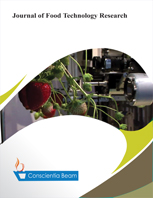Physicochemical, microbial, and textural properties of an imitation cheese based on rice milk, chia seed and hazelnut oil
DOI:
https://doi.org/10.18488/jftr.v11i4.4025Abstract
Imitation cheeses (IMC) attracted the attention of consumers due to their health benefits and cost-effectiveness. The purpose of this study was to formulate a new imitation cheese based on rice milk, chia seed and hazelnut oil. The imitation cheese was prepared using carboxymethyl cellulose and lecithin at three concentrations of 0, 1 % and 2% (v/w) which was added to the IMC samples contained rice milk, chia seeds and hazelnut oil. Then, physicochemical, microbial and textural characteristics and fatty acids profile of the cheese samples were evaluated. The addition of carboxymethyl cellulose and lecithin in the range of 0 to 2% increased the moisture content of samples (60.45 to 71.7%). The pH of the samples increased (4.41 to 4.57) with increasing the concentration of carboxymethyl cellulose and lecithin, while the peroxide value showed a decreasing trend (1.37 to 1.12 mLEq O2/kg oil). Besides, during the storage time peroxide value showed an increasing trend. According to the total count results, the samples contained carboxymethyl cellulose and lecithin showed a dose-dependent inhibitory effect against microbial growth. The hardness, cohesiveness, springiness, gumminess of samples containing carboxymethyl cellulose and lecithin were higher than the control sample. The analysis of fatty acids profile in the selected sample of imitation cheese showed that it contained high amounts of unsaturated fatty acids. In general, the formulated imitation cheese with using carboxymethyl cellulose and lecithin showed proper microbial, physicochemical and textural properties and could be a suitable substitute for cheeses made from animal sources.

